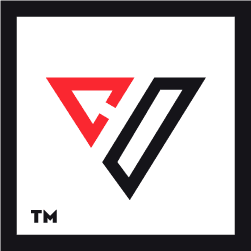

As a business owner in today’s modern environment, you know very well how important establishing an online presence is. If you want to achieve the overall success of your sales and operations, then you know how crucial it is for your site to rank.
Much of today’s markets believe that not everyone would have survived the sudden boom of certain industries if not for efficient digital marketing. But now that competition is growing fiercer by the minute, the standards of online marketing have changed.
Nowadays, normal marketing strategies such as building email lists and social media marketing are not enough. Hence, organic SEO has become the first requirement for a successful digital marketing campaign! Most businesses are already familiar with SEO strategies and the success it brings to companies.
Normally, there are two ways of doing an organic SEO campaign, all by yourself or with the help of professional SEO services in the USA. However, is doing things by yourself better than looking for an affordable professional SEO company?
In this article, we would tell you why search engine optimization (SEO) services are worth your investment! First, let us talk about what SEO is, how it works, and why it matters most today.
What Is SEO And How Does Optimization Work
Search engine optimization is considered to be one of the foundations of a digital marketing campaign. For those who still get confused by what it is, SEO the process of optimizing a website. This process aims to get as much organic traffic from the search engine results page of Google, Yahoo, Bing and more.
Say, if a user is to search for ‘yoga studio near me’, then local yoga studios would aim to be on the first page of Google. And to do this, businesses need to optimize their website by changing their content or web design that aligns with the requirements of the search engine.
How Optimization Works
Just like normal businesses, search engines like Google hope to provide the best service for their customers. This means they want to deliver accurate and high-quality sites to their users. And to achieve this, search engines scan or crawl different websites to understand and determine their quality.
Some of the factors they take into consideration when ranking sites are its navigation as well as relevancy. How appropriate is the content and how easy can readers find it? If the site’s easy to navigate and its content is of high quality, they often rewarded them with a high ranking.
There are many different elements to digital marketing and especially search engine optimisation (SEO) and each of them is important. Many people concentrate on onsite SEO without realizing that it is not as important as many off-site elements.
This could be because it is easier to ensure keywords are in the right places and that there are internal links. A clear call to action and relevant graphics, a nice header, and so on are all good and necessary, but if you ignore link building offsite SEO, don’t expect the website to perform as well as it should.
That is why it is a good idea to have your website designed and set up by a professional. They know exactly how to ensure it will have the whole 100% of important SEO factors all in place so your website has a much better chance of being all you want it to be for your business. Plus, they can ensure that your website has stable base functions that can easily be expanded so it will still suit your business in 10 or more year’s time.
Finding New Friends
As a result, businesses spend the majority of their time investing in content marketing and responsive web design. They conduct their keyword research to ensure their high-quality blog posts reach the right audience. Also, they are devoted to creating a responsive website that carries all the SEO fundamentals it needs to rank higher.
Ultimately, it takes a while to perfect SEO strategies — especially with search engines like Google regularly updating its algorithm to serve users better. Most experts suggest that business owners take their time in studying the strategy for the sake of their companies. However, nothing beats experience and professional services when it comes to actual execution.
Are Professional SEO Services Worth the Cost?
Now the question stands, are marketing services and SEO firms worth the investment? Admittedly, companies can opt to do the project on their own specifically if it only involves local SEO. But as we’ve mentioned earlier, perfecting the craft of optimization takes time.
Here are some important things to consider when collaborating with an SEO agency.
Search Engine Algorithms Change Frequently
Unfortunately for business owners, search engine algorithms are always changing. This makes it hard to predict what will increase your rankings and what won’t make a bit of difference. And you don’t always have time to read up on those changes or follow the latest industry research and case studies.
A professional SEO company stays up to date on those changes month after month. You’ll have the peace of mind knowing your company’s site is always able to position itself for better search engine rankings.
SEO Helps You Reach More Clients
So, you decided to purchase an email list and are ready to start contacting people who might be interested in your services. However, this does not guarantee that your target audience would be interested in your services.
Search engine optimization, on the other hand, helps you reach your target audience more accurately. Yes, it costs money to implement, but once you do, the results will be long-lasting. You’ll be avoiding the headache of unqualified leads clogging up your inbox.
SEO Analysis Gives You Insight Into the Competition
A professional SEO provider always analyzes your competition’s websites, social media accounts, and data to see what’s working and what isn’t. They then use this information to create a strategy designed to give you long-term results and success. Unless you’re intimately familiar with SEO tactics, performing the same analysis will be almost impossible. But it’s crucial to your success and helps you stand apart from the competition right from the start.
Optimize Your Site Now
The sooner you get your site optimized, the better it will perform. Schedule a consultation with our SEO services team and let’s discuss some of our affordable professional SEO services!







